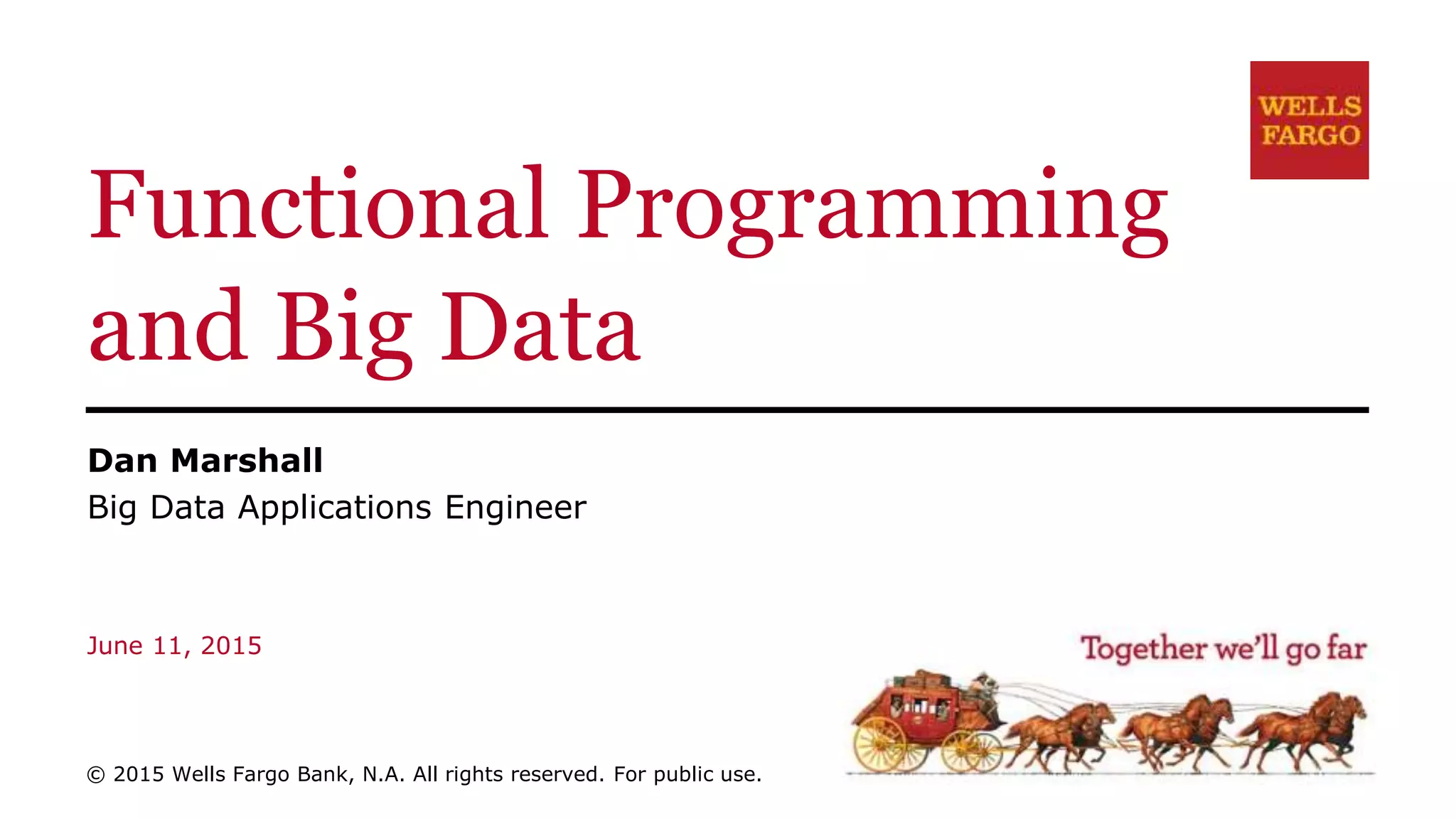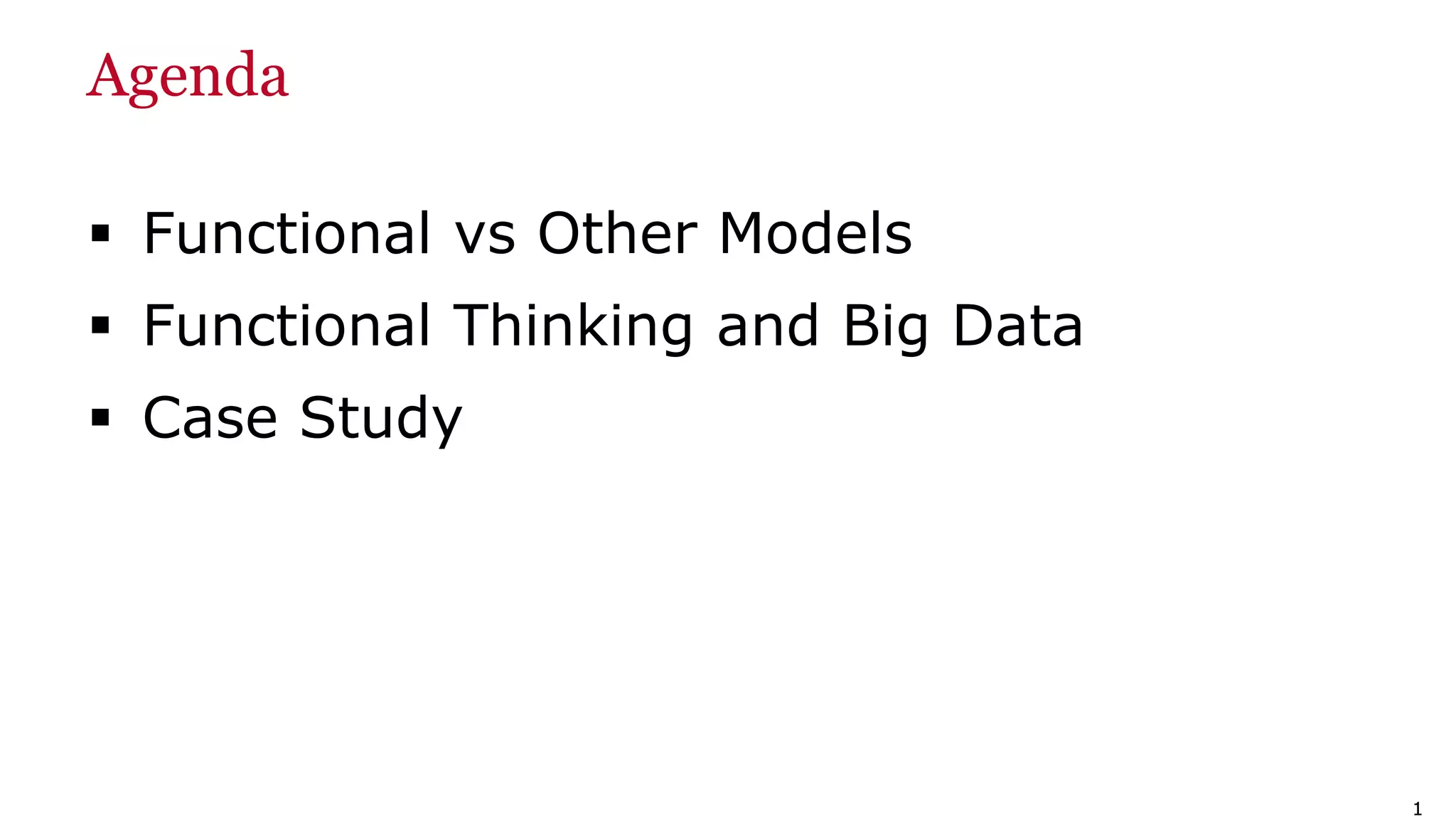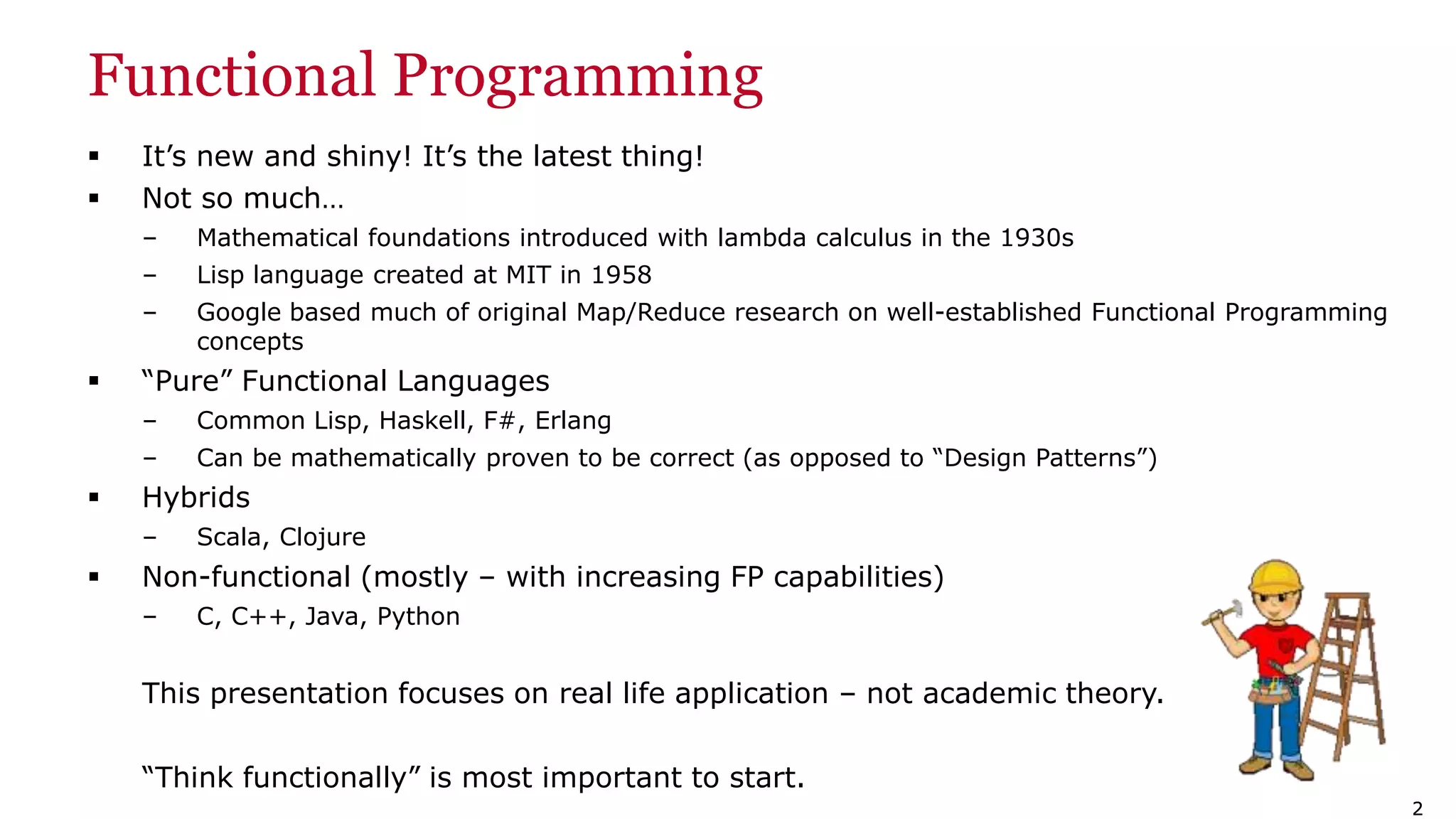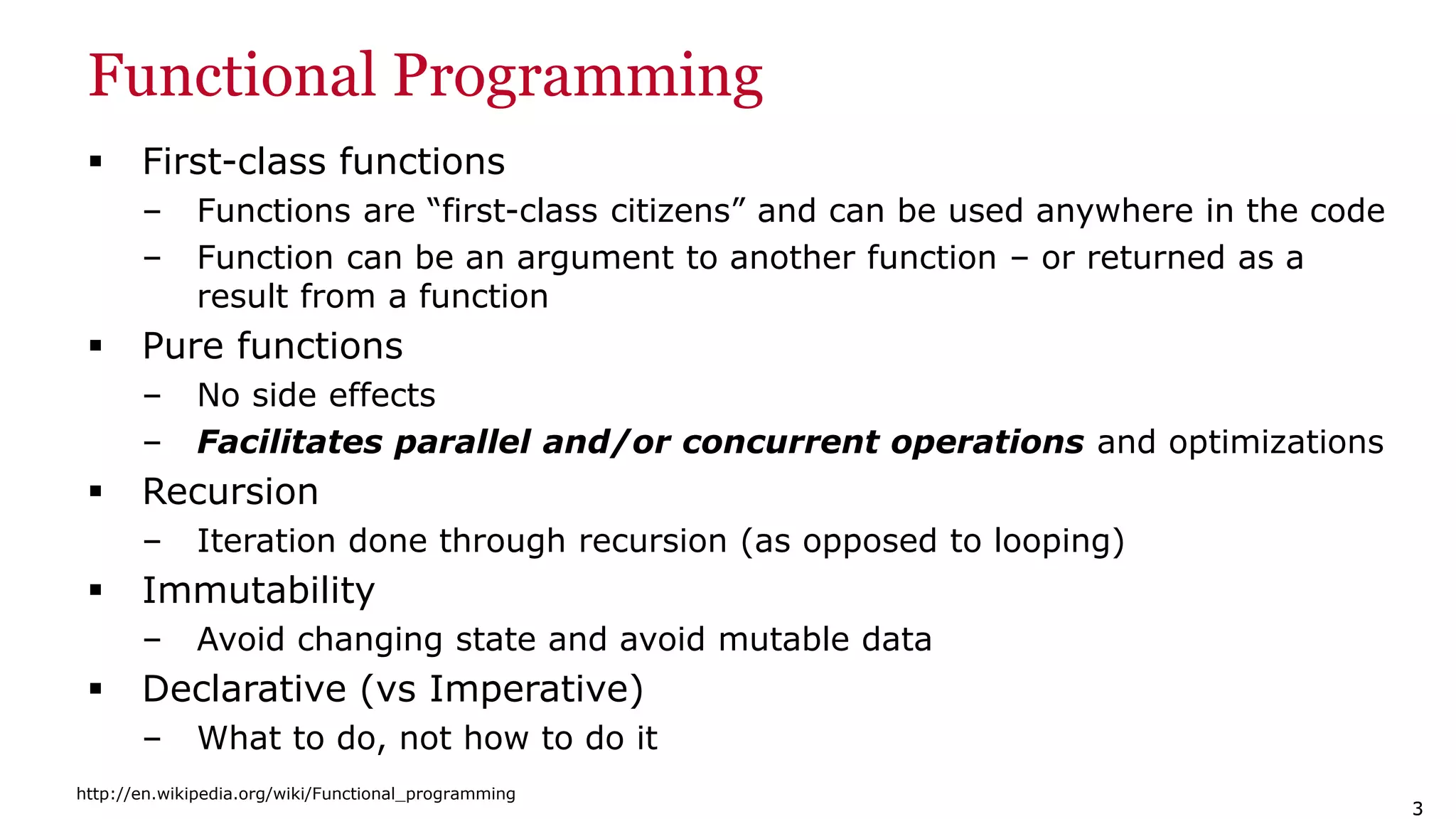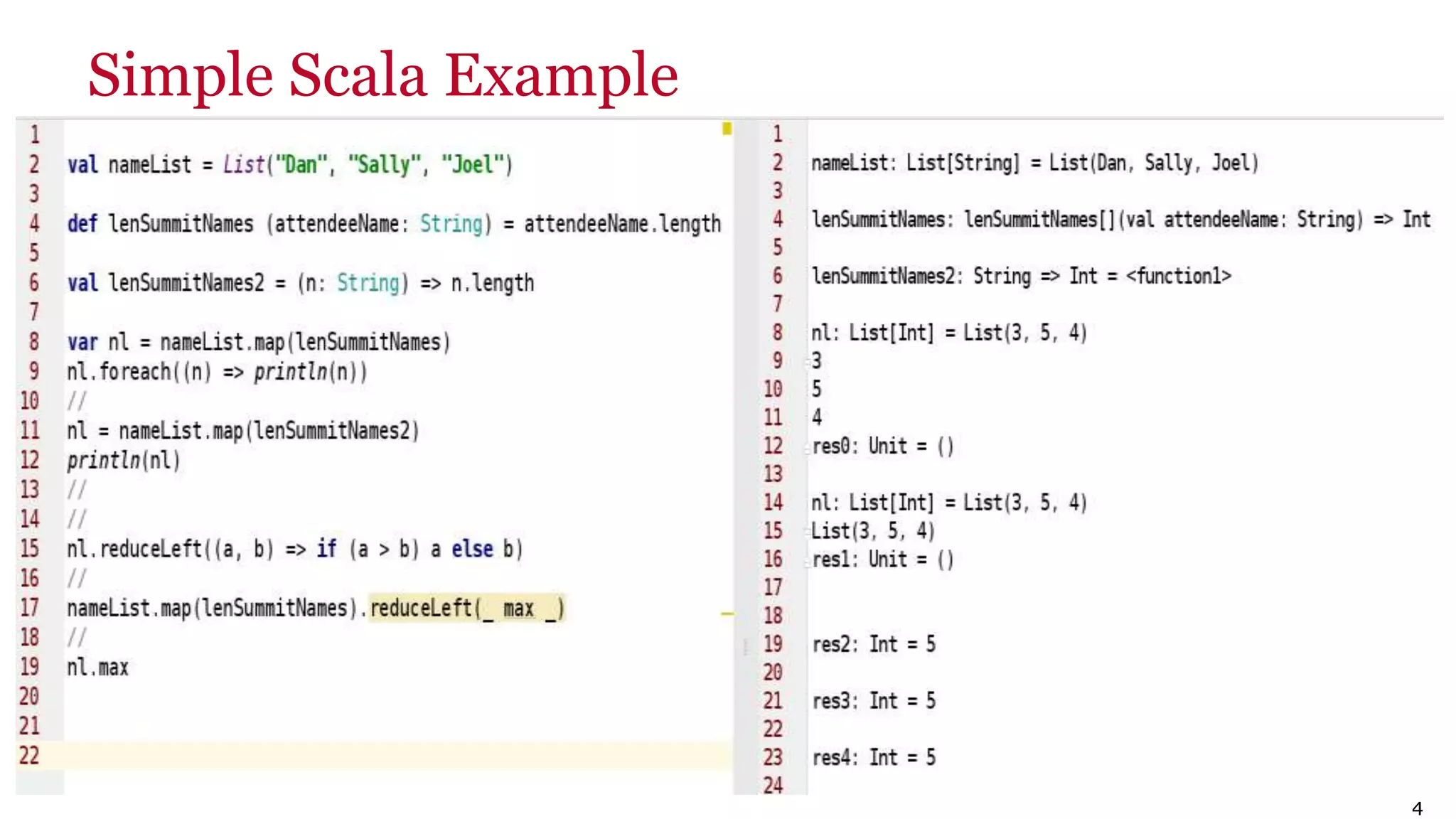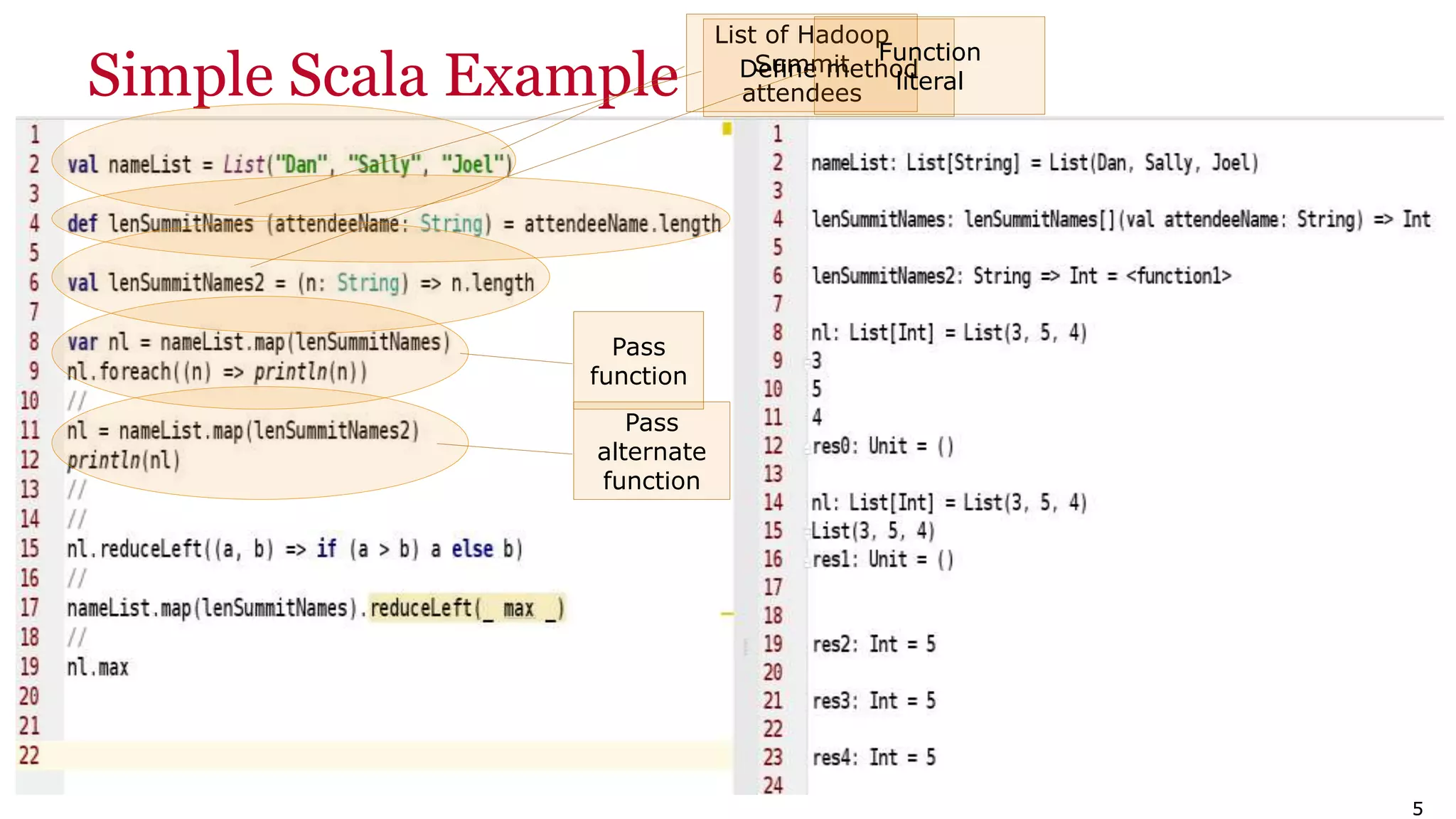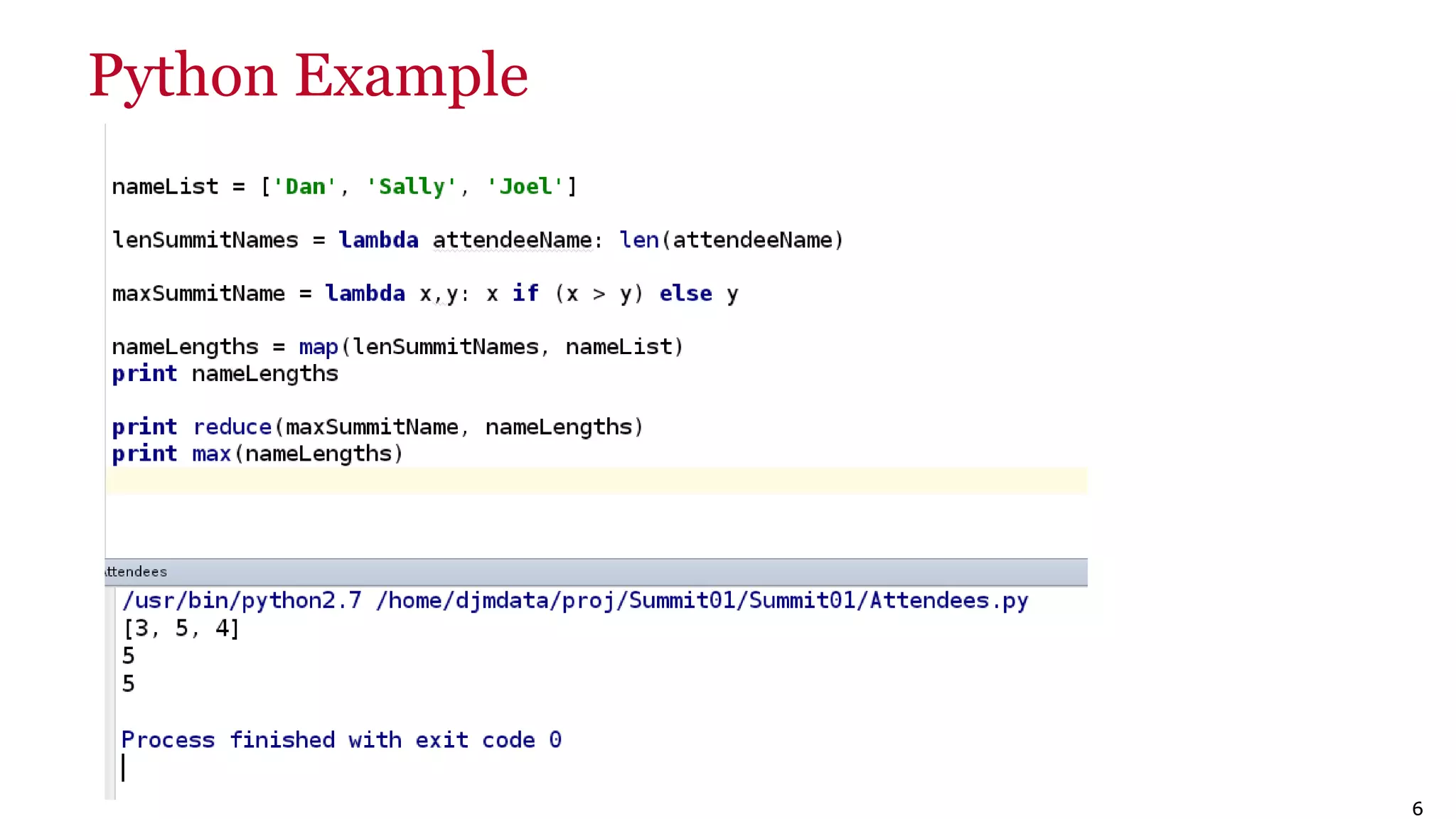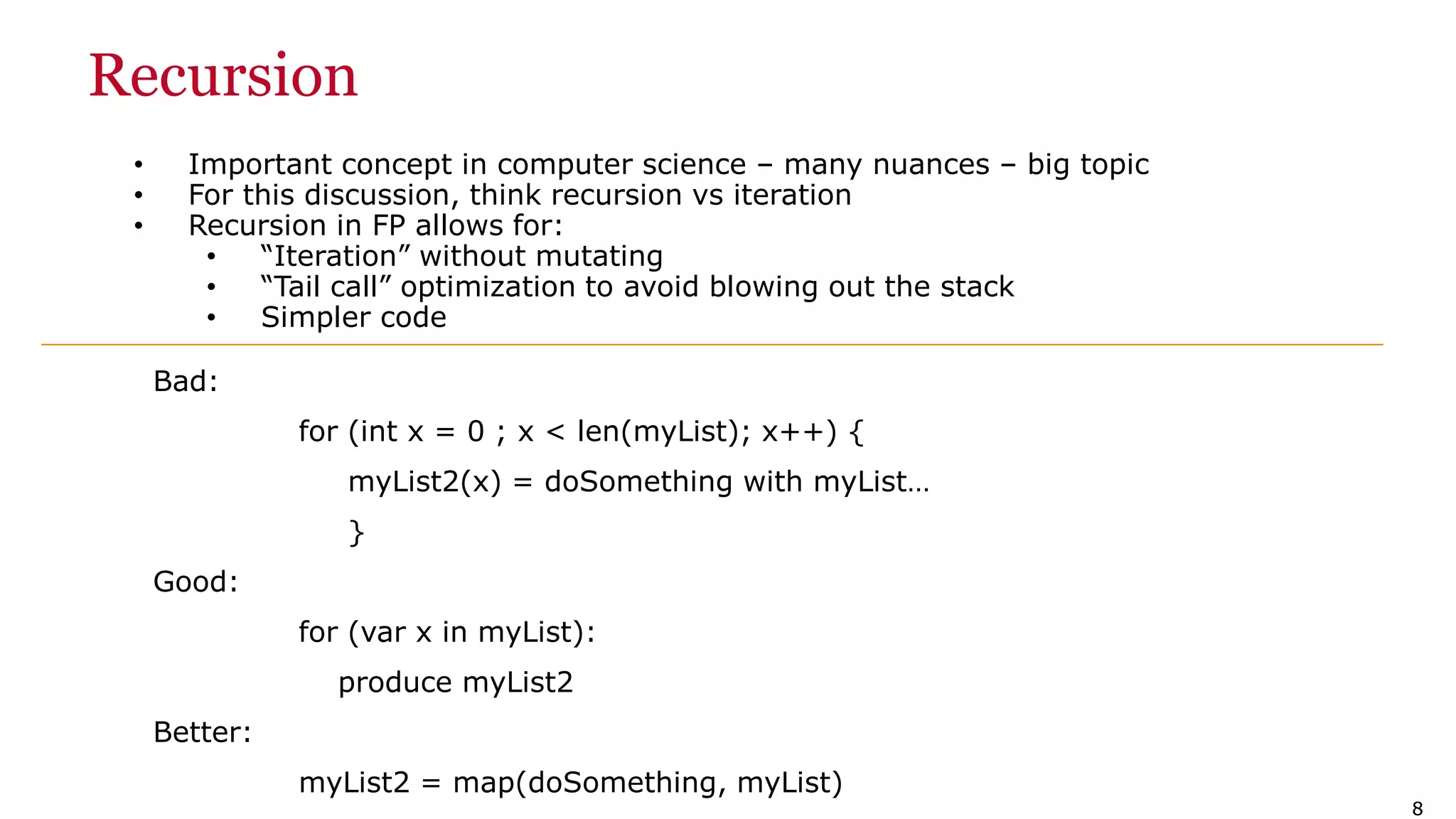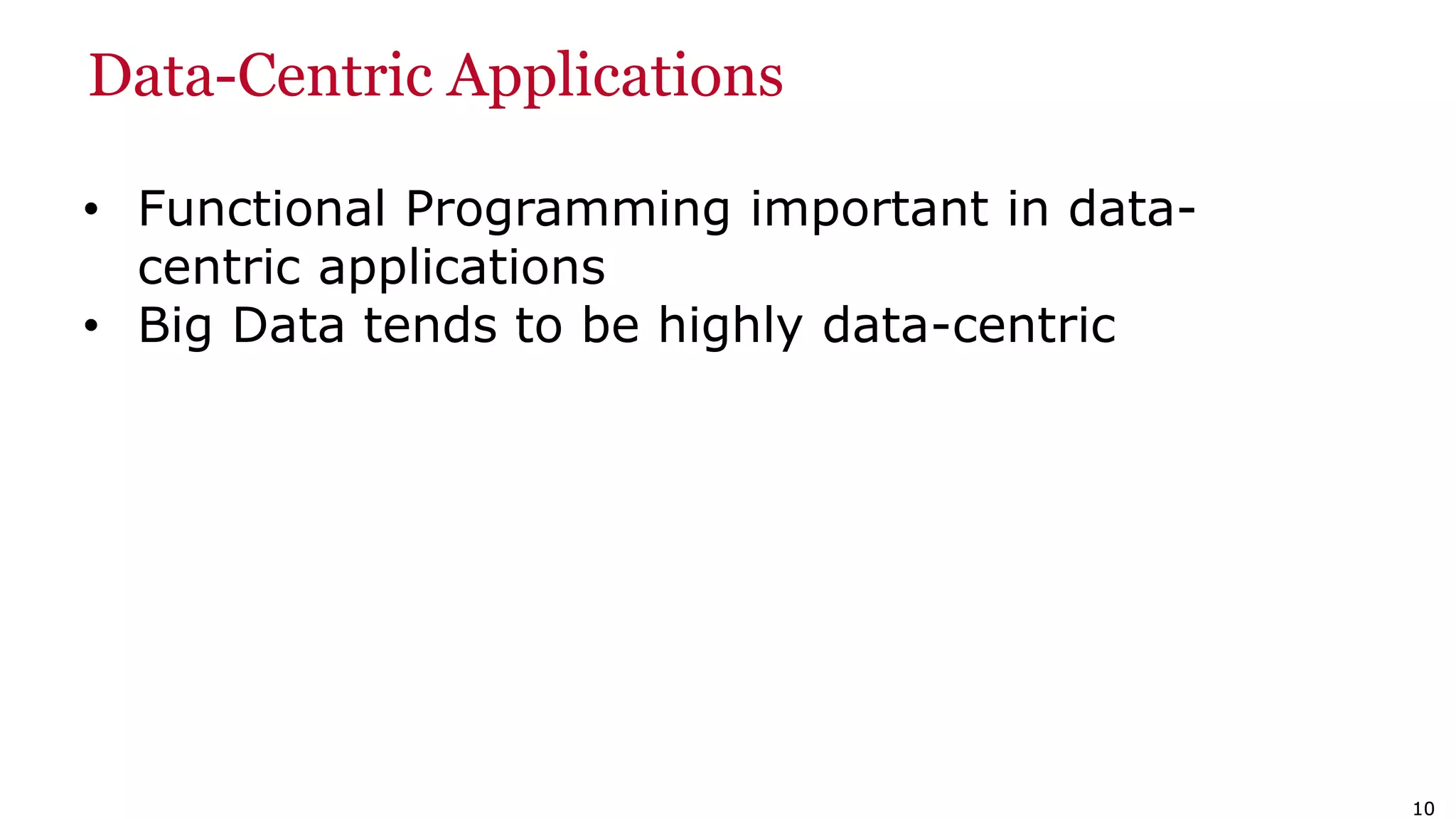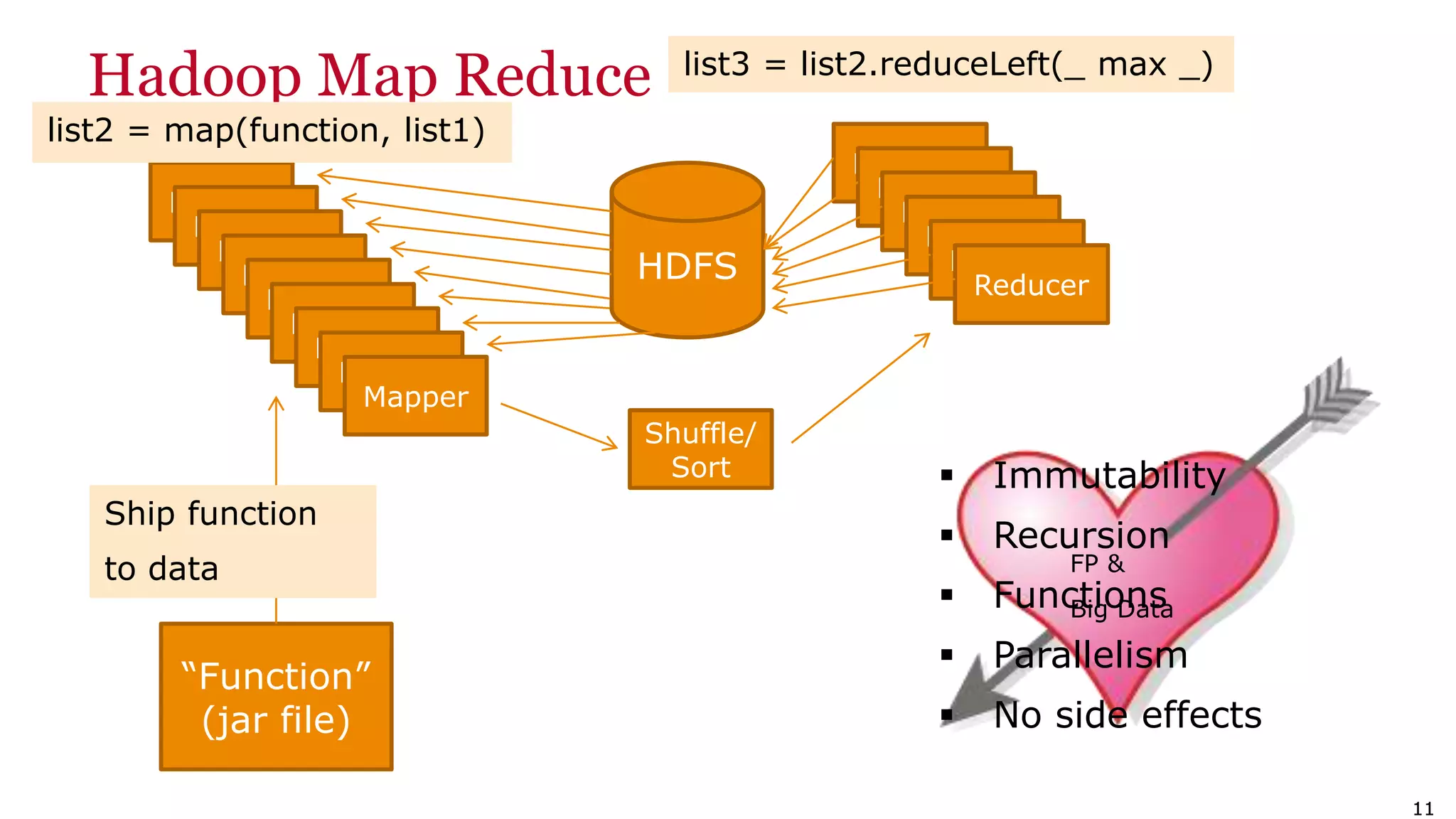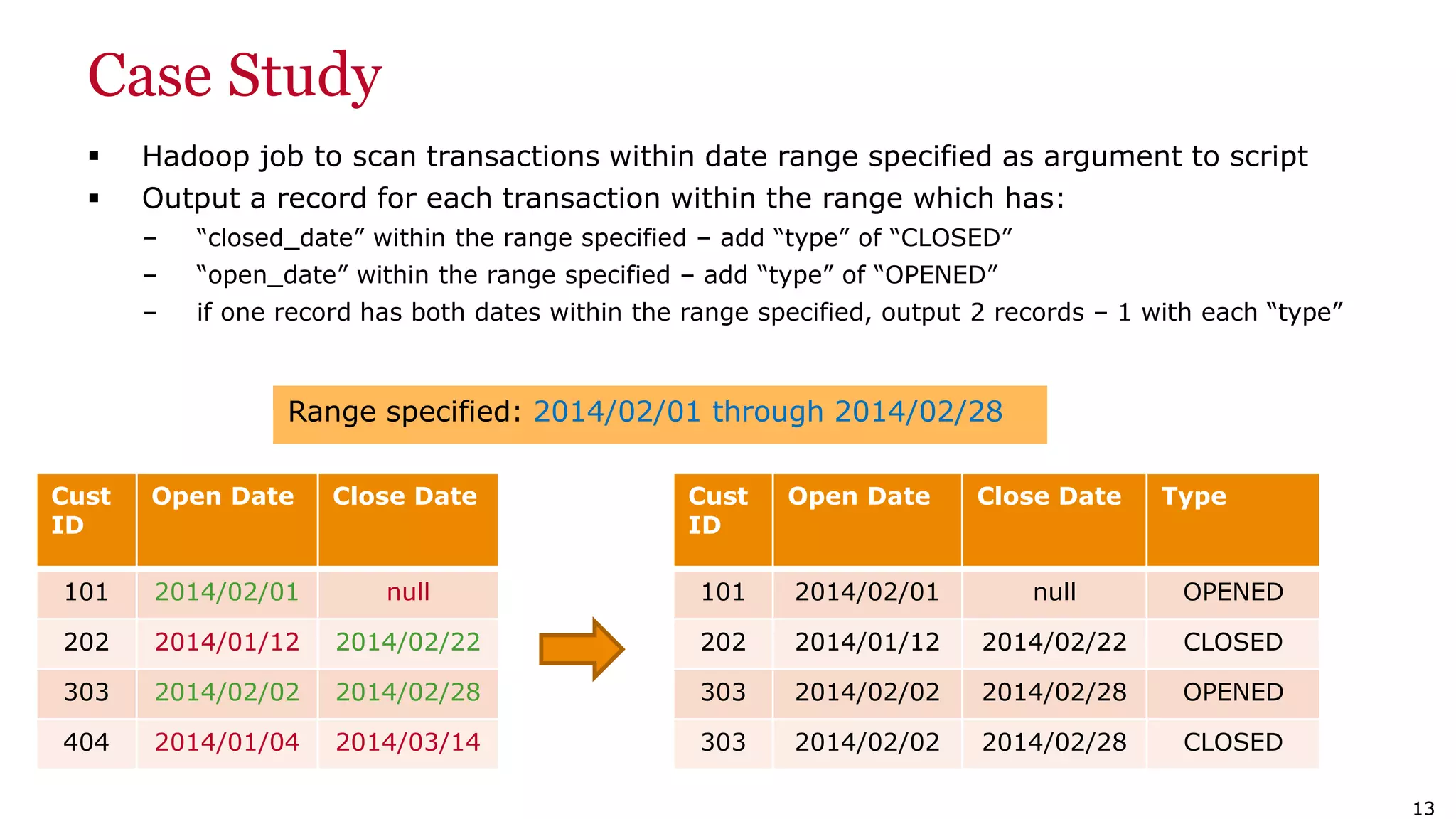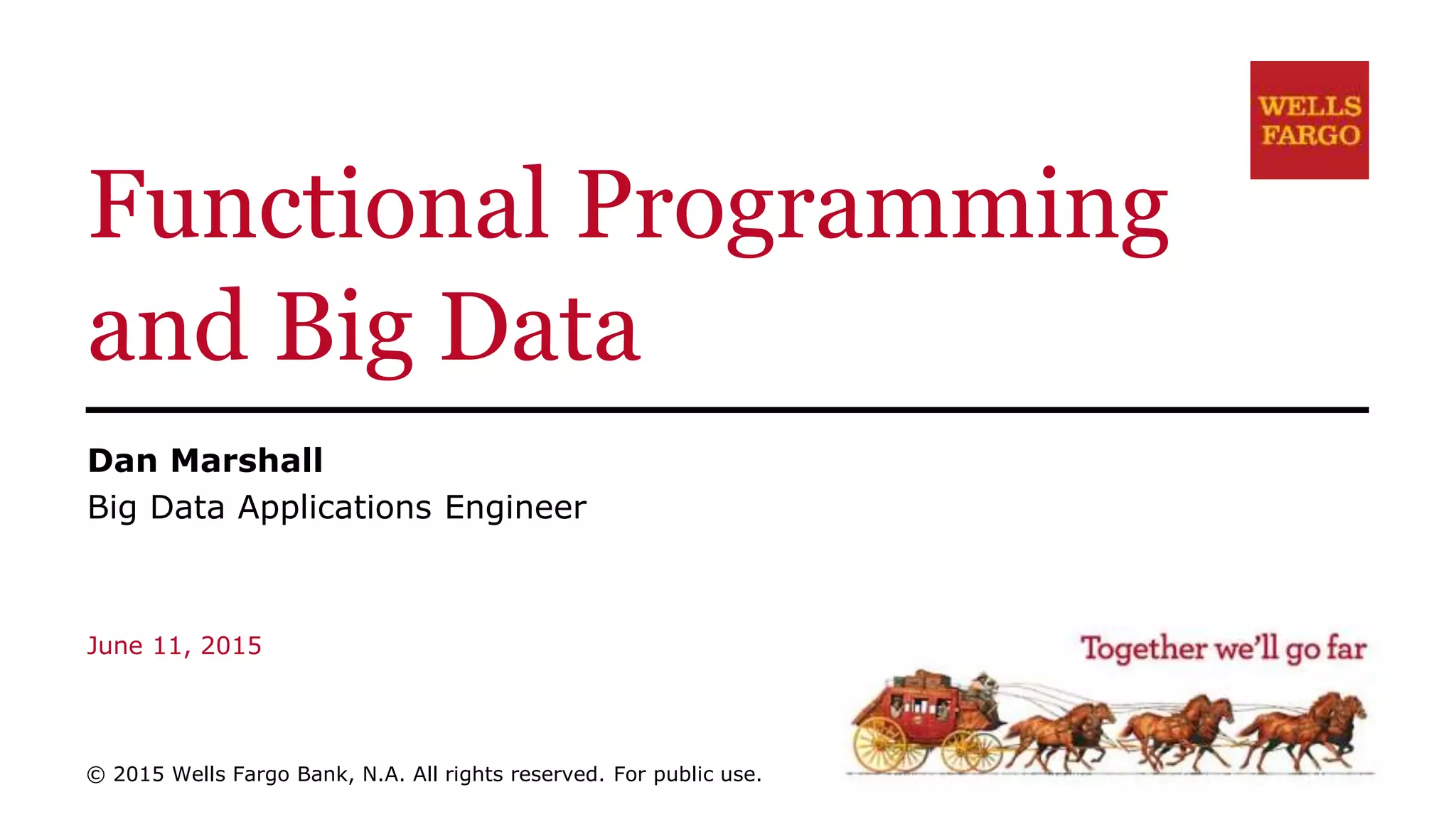The document discusses functional programming concepts and their application to big data problems. It provides an overview of functional programming foundations and languages. Key functional programming concepts discussed include first-class functions, pure functions, recursion, and immutability. These concepts are well-suited for data-centric applications like Hadoop MapReduce. The document also presents a case study comparing an imperative approach to a transaction processing problem to a functional approach, showing that the functional version was faster and avoided side effects.
